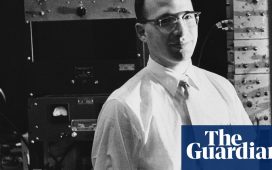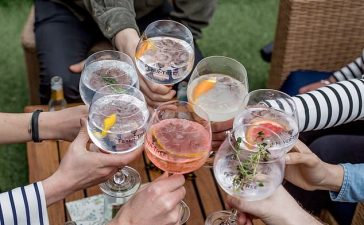Young corals bred using in vitro fertilisation (IVF) and planted in reefs around the US, Mexico and the Caribbean have surprised scientists, after most survived last year’s record marine heatwave, while older corals struggled.
A study has found that 90% of the young IVF-created corals surveyed remained healthy and colourful, holding on to the algae that live within them and supply them with nutrition. In contrast, only about a quarter of older non-IVF corals remained healthy.
The rest, including large colonies that may have lived for centuries, were either bleached by the heat – expelling the algae from their tissues and turning white – or paled, expelling some of the algae. Some died in the heatwave before the survey was conducted.
Dr Margaret Miller, lead author and research director at Secore International, a reef conservation organisation, said: “[The heatwave] was a horrible time. But I was impressed and surprised that the data came out with such an extreme pattern.”
The young corals were bred over the past five years using a version of IVF developed by Secore. Divers collected coral spawn, which was used to fertilise eggs in the laboratory. The resultant baby corals were then planted on reefs across the Caribbean to form colonies.
Most coral restoration efforts have historically focused on fragmentation techniques – where corals are broken into smaller pieces and transplanted to a new location. Rather than producing exact clones, as fragmentation does, breeding corals by IVF increased the genetic diversity, giving them a higher chance of adapting to heat over time. “Natural selection back in the reef environment will choose the best ones,” said Miller.
The 771 young corals in the study – a fraction of the thousands bred each year by Secore and partner institutions – live in restored reefs off Mexico, the Dominican Republic, the US Virgin Islands, and the Dutch Caribbean territories of Bonaire and Curaçao.
Researchers at Sombrero reef in the Dominican Republic compared young and old elkhorn corals (Acropora palmata). The reef was once filled with the large branching species, but most died during an outbreak of white band disease in the 1980s. The reef is now home to scattered older corals that were spared by the disease and numerous young elkhorn corals bred to restore the reef.
When Maria Villalpando, researcher at the Dominican Foundation for Marine Studies (Fundemar), surveyed the corals after peak heat stress last autumn, she found the young elkhorn corals were healthy. “They weren’t even pale,” she said. The older elkhorn corals, however, did not fare well. “Sadly, we lost most of them after this bleaching event.”
Why the young corals are more heat tolerant is not well understood. There are several hypotheses, but Miller suspects they may be better able to acquire symbiotic algae that tolerate heat, and may try out several types of algae, some of which handle heat better than others. “They are quite exploratory in those early stages,” said Miller. Eventually, the young corals settle on types of symbionts that will work for them, she said.
Previous research suggests that if they live long enough, the young corals will probably become less tolerant to heat stress as they age, making them increasingly vulnerable as global temperatures rise.
Miller said that in Australia, there has been a bleaching event every other year for the past six years, while in the Caribbean they are occurring approximately every five years. She added that following a bleaching event, even if a colony survives, its ability to reproduce is compromised for a number of subsequent years.
“So now that the intervals between these heat waves have become so short, coral propagation alone is unlikely to change the fate of these populations,” said Miller. “We need to address the underlying causes of global climate change. But I think it’s important that we’re supplementing coral populations in the meantime, because it might be able to buy us some time.”











